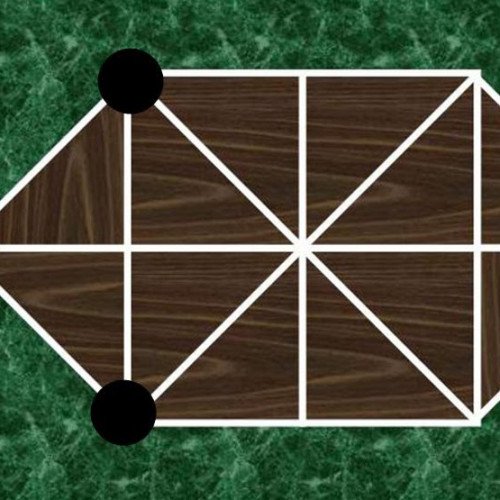ABALONE VS HARE AND HOUNDS

ABALONE
Abalone is a two-player abstract strategy board game designed by Michel Lalet and Laurent Lévi in 1987. Players are represented by opposing black and white marbles on a hexagonal board with the objective of pushing six of the opponent's marbles off the edge of the board. Abalone was published in 1990 and has sold more than 4.5 million units. The year it was published it received one of the first Mensa Select awards. It is currently sold in more than thirty countries. The board consists of 61 circular spaces arranged in a hexagon, five on a side. Each player has 14 marbles that rest in the spaces and are initially arranged as shown below, on the left image. The players take turns with the black marbles moving first. For each move, a player moves a straight line of one, two or three marbles of one color one space in one of six directions. The move can be either broadside / arrow-like (parallel to the line of marbles) or in-line / in a line (serial in respect to the line of marbles), as illustrated below. A player can push their opponent's marbles (a "sumito") that are in a line to their own with an in-line move only. They can only push if the pushing line has more marbles than the pushed line (three can push one or two; two can push one). Marbles must be pushed to an empty space (i.e. not blocked by a marble) or off the board. The winner is the first player to push six of the opponent's marbles off of the edge of the board.
Statistics for this Xoptio

HARE AND HOUNDS
Hare games are two-player abstract strategy board games that were popular in medieval northern Europe up until the 19th century. In this game, a hare is trying to get past three dogs who are trying to surround it and trap it. The three dogs are represented by three pieces which normally start on one end of the board, and the hare is represented by one piece that usually starts in the middle of the board or is dropped on any vacant point in the beginning of the game. Hare games are similar to Bear games and hunt games. One side has more pieces than the other with the larger side attempting to hem in the smaller side. The smaller side though is usually compensated with more powers. Where Hare games differ is that the hounds can only move forward or sideways, and not backwards. The hunters in the Bear games can move in all directions. Furthermore, the dog in the Hare games cannot capture any of the hares, unlike the tigers, leopards, jaguars, and foxes in the hunt games which can capture their respective prey counterparts. There are several different Hare game boards depending upon the country of origin. Many preferred the narrow double-ended spearhead-like boards with orthogonal and diagonal lines running through them. There were several variations on this design. However, one in Denmark used a round board, and another design is found in Latvia. Hare games are referred to by different names. In 19th century France, a hare game that was popular among the military was called The Soldiers' Game. The dog is sometimes referred to as a hound, and hence the alternative title to this game as Hare and hounds. Other names are French Military Game, Game of Dwarfs, The Devil among tailors, and Trevolpa or Volpalejden . As the rules of the game are simple to program, there are many electronic implementations of the game. The second link below allows you to play this game. In this computer game, the hares and hounds are reversed. Instead, it is the hounds attempting to surround and immobilize the hare.